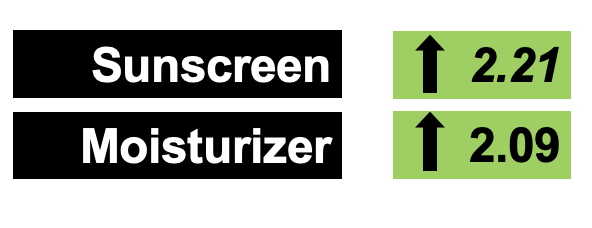Sunscreens, Moisturizers and the Risk of FFA: Where are we at so far?
Systematic Review Identifies Two Fold Increase Risk of FFA in Users of Sunscreens and Moisturizers
There is still some controversy in the medical literature as to exactly what risk sunscreens and moisturizers confer to the risk of developing FFA. US researchers set out to perform a quantitative synthesis of all the currently published studies examining the association between FFA, sunscreen, and moisturizers. The authors performed a systematic review using studies from 1960 to present. Out of 87 articles retrieved, nine met the inclusion criteria. Nine studies evaluated the association between sunscreen and FFA and eight evaluated the association between moisturizers and FFA.
In total, there were a total of 1248 patients with FFA (mean age: 58.9 years, 95.7% female) and 1459 controls (mean age: 56.9 years, 89.8% female). Control patients in this study included participants without a skin condition and/or those with the hair loss condition androgenic alopecia.
Two Fold Increased Risk for Sunscreen and Moisturizers
The authors calculated an odds ratio of around 2 for sunscreens and moisturizers. Specifically for sunscreens, the OR was 2.21 with 95% CI [1.13-4.33], p value <0.001. Eight studies (88.9%) also evaluated an association between FFA and moisturizers. The OR was 2.09 with 95% CI [1.49-2.92], p value=0.002.
Conclusion
The results of this systematic review suggest that sunscreen use is associated with 2.21 times higher likelihood of developing FFA and the use of moisturizers is associated with 2.09 times higher likelihood of developing FFA.
The study was not designed to examine potential mechanisms for sunscreen to cause FFA. Certainly many different mechanisms have been proposed including endocrine disruption, allergy, UV blocking effects, lichenoid reactions in the hair. The reality is no definitive mechanism has been finalized.
The study has its limitations. The authors point out that these studies are retrospective in nature and rely on self reported data. It’s also not clear if patients with FFA use skin products more than those who don’t have skin conditions and this would account for this association.
Finally, it’s important to note that a two fold increased risk is still pretty small. I put the risk of FFA at somewhere between 1 in 4000 and 1 in 10,000 depending on the specific patient population one is considering. Should people in the world stop using these products to try to prevent developing FFA in the first place? Well, probably not. The key question is whether patients with FFA should alter their use of these products once they have FFA. That we don’t really know. For now, the best we can say is to keep these products away from the hairline and wear hypoallergenic sunscreens if possible. This too is a best guess.
More studies are needed in this evolving area of scarring alopecia.
REFERENCE
Maghfour J et al. The Association between Frontal Fibrosing Alopecia, Sunscreen, and Moisturizers: A Systematic Review with a Meta-Analysis. J Am Acad Dermatol. 2022 Jan 21;S0190-9622(22)00083-4.
This article was written by Dr. Jeff Donovan, a Canadian and US board certified dermatologist specializing exclusively in hair loss.

